In the expansive realm of human experience, few elements carry the profound weight of identity, heritage, and expression quite like hair. For those whose ancestry winds through the rich soil of Africa and its diaspora, hair holds an especially revered place, not merely as a biological appendage, but as a living archive, a sacred conduit, and a potent declaration. This is the domain of what we come to understand as the Hair Authority. It is the inherent, ancestral right and the active stewardship an individual and community wield over their unique hair, encompassing its form, care, interpretation, and public presentation.
This authority speaks to the recognition of hair as a profound wellspring of historical knowledge, a dynamic canvas for self-telling, and a vibrant nexus of communal ties. The journey to comprehend Hair Authority is a path woven through scientific understanding, cultural memory, and deeply personal narratives. It reflects an evolving relationship, from hair’s most elemental biological structure to its elevation as a symbol of sovereignty and connection across generations. This exploration honors the legacy of care, the echoes of ancient practices, and the unwavering spirit of resilience that characterize Black and mixed-race hair experiences.
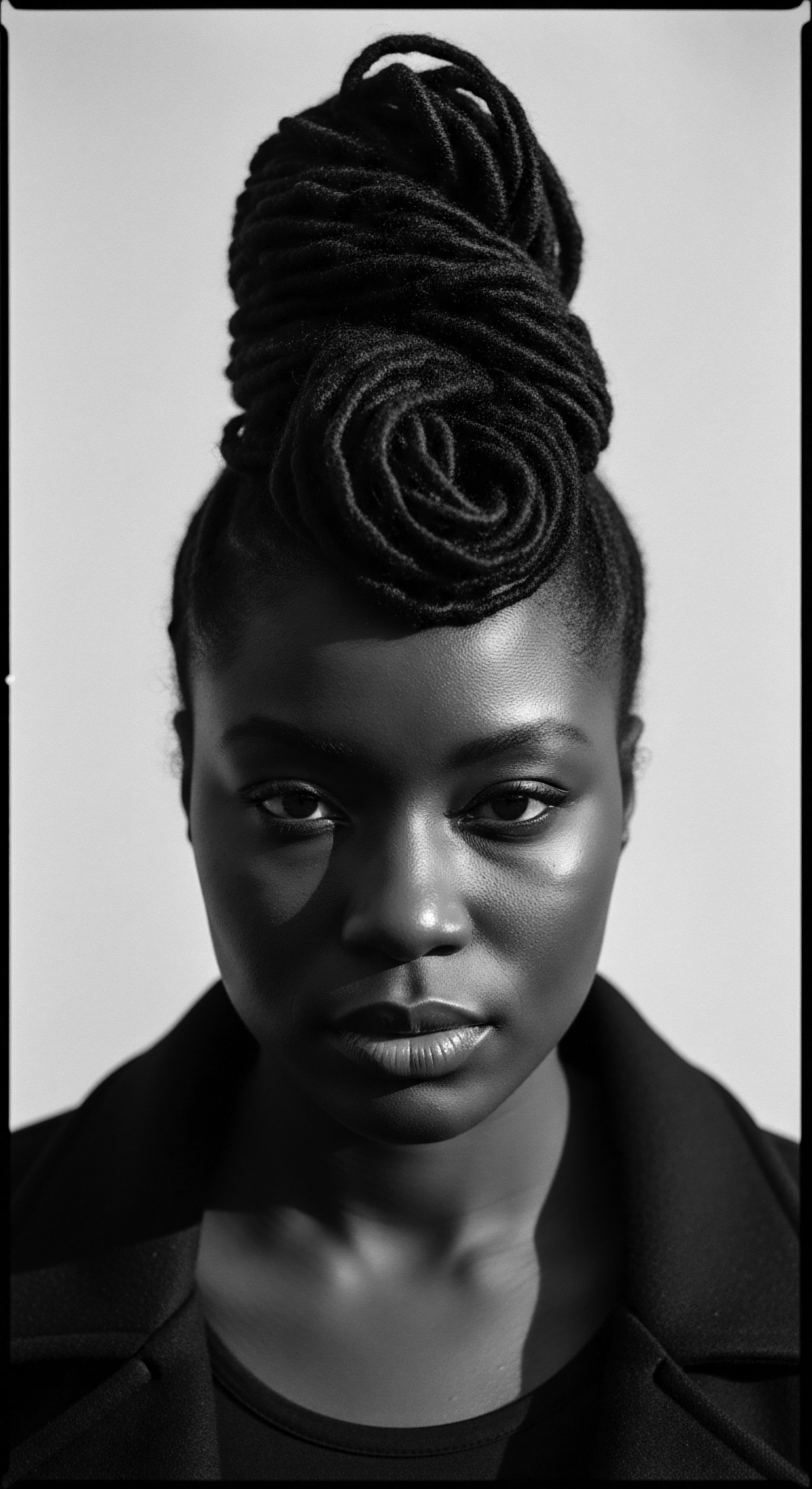
Fundamentals
The concept of Hair Authority, at its core, refers to the intrinsic right and agency an individual possesses concerning their hair. This initial understanding, often rooted in personal experience, acknowledges that every person holds a claim to determine how their hair is groomed, adorned, and presented to the world. For individuals with textured hair, particularly those from Black and mixed-race ancestries, this fundamental principle gains heightened meaning, informed by centuries of cultural practice and historical context.
It signals a departure from external pressures or societal norms that might seek to dictate acceptable hair aesthetics. Instead, it places the power firmly within the hands of the hair-bearer, a recognition of their innate connection to their crown.

Recognizing Self-Sovereignty of the Strand
To grasp the simplest meaning of Hair Authority, one begins by acknowledging hair as an extension of the self, a physical manifestation of identity. This perspective emphasizes that the decision of how to wear one’s hair, whether in its natural coils, intricate braids, or any other style, is a personal choice, unburdened by external judgments. It is about an individual’s right to define beauty for themselves, rather than conforming to externally imposed standards. This foundational understanding lays the groundwork for deeper explorations into the historical and cultural forces that have shaped, and at times challenged, this basic sovereignty.
Consider the daily rituals of hair care, the gentle detangling, the application of nourishing balms. Each action in this process becomes a testament to this inherent authority. It is in these quiet moments of self-care that the individual asserts their agency over their hair, choosing products, techniques, and styles that resonate with their personal sense of wellbeing and comfort. This intimate engagement highlights the practical aspect of Hair Authority, recognizing it not as an abstract notion, but as a lived reality.
Hair Authority begins with the deeply personal understanding that one’s hair is an extension of self, a canvas for expression chosen solely by the individual.
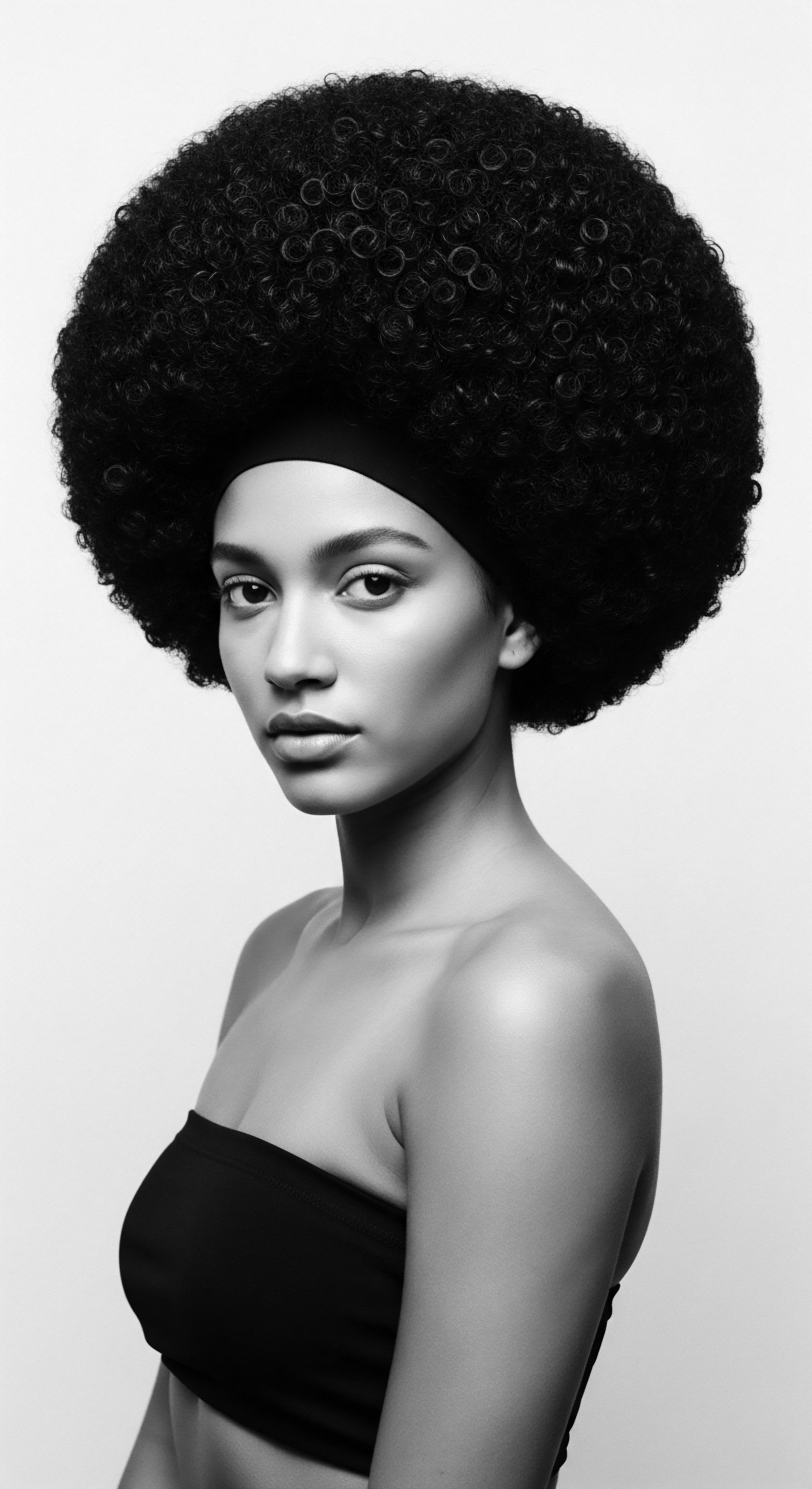
Elemental Beginnings ❉ Hair’s Biology
From a foundational scientific perspective, hair is a complex biological structure, emerging from follicles nestled beneath the scalp’s surface. Each strand comprises a shaft of keratin, a protein also found in skin and nails, growing in distinct patterns that dictate its texture—whether straight, wavy, curly, or coily. The unique characteristics of textured hair, often defined by its tightly wound helical structure and specific cuticle arrangement, inform its needs for moisture, gentle handling, and protective styling.
Understanding this elemental biology provides the initial scientific groundwork for appreciating why specific care practices, often passed down through generations, are so vital for maintaining hair’s health and vitality. This biological understanding underpins the ancestral knowledge of how to best interact with one’s hair.
The very composition of a hair strand, from its cortex to its cuticle, influences how it responds to humidity, tension, and external elements. Textured hair, with its often elliptical cross-section, is more prone to dryness and breakage compared to hair with a rounder cross-section, a fact that has long been understood in ancestral communities through observation and experience. This biological reality necessitated the development of specific care rituals, rooted in deep understanding of hair’s inherent qualities, long before modern scientific terms were coined. It is a testament to the wisdom embedded in historical practices, which often intuitively addressed hair’s unique structural demands.
- Follicle Structure ❉ The shape of the hair follicle determines the curl pattern, with more oval or flattened follicles producing tighter curls or coils.
- Keratin Formation ❉ The primary protein, keratin, forms strong bonds, but its distribution and density vary, influencing hair’s strength and elasticity.
- Cuticle Layer ❉ The outer layer of overlapping scales, the cuticle, is often more lifted in textured hair, making it more susceptible to moisture loss and tangling.
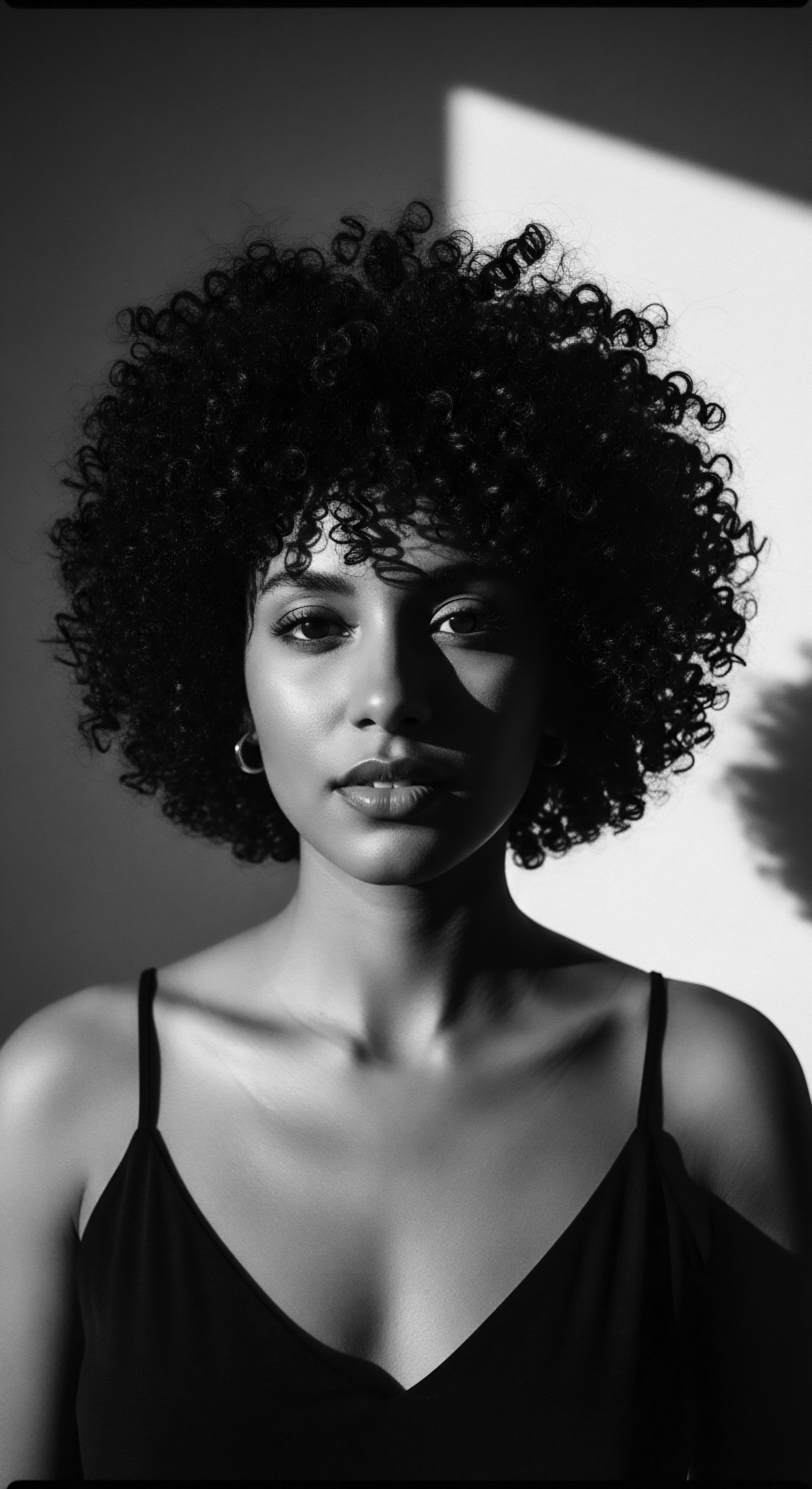
Connecting to Ancient Practices ❉ Early Hair Care
Even at a fundamental level, Hair Authority finds its roots in antiquity. Ancient African societies, long before colonial incursions, understood hair as far more than mere adornment. It was a language, a signifier of age, marital status, social standing, tribal affiliation, spiritual beliefs, and even a person’s readiness for marriage or their period of mourning (Afriklens, 2024; Okan Africa Blog, 2020).
Hair care was a communal activity, performed by skilled practitioners—often close family members—who held revered positions within their communities (Okan Africa Blog, 2020; Umthi Beauty, 2022). These practices were not arbitrary; they reflected an authority over one’s body and identity, a deep connection to ancestral wisdom that guided every braid, twist, and adornment.
For example, the Himba Tribe in Namibia uses intricate braiding and a red ochre paste called Otjize to signify important life stages (Bebrų Kosmetika, 2024). Young girls wear two braids, signaling youth, while a braid covering the face signifies readiness for marriage (Bebrų Kosmetika, 2024). This red ochre paste, composed of butterfat and ochre, also serves a practical purpose, protecting hair from the sun and insects, highlighting how ancestral practices seamlessly blended aesthetic meaning with functional care (Bebrų Kosmetika, 2024). This historical example serves as a powerful testament to the multifaceted nature of Hair Authority, where spiritual belief, social communication, and practical care converged in everyday life.
Ancestral customs illuminate Hair Authority as a deeply communal and symbolic practice, where styles communicated profound social, spiritual, and personal truths.
The very act of hair styling in these contexts was a ritual of social cohesion, fostering bonds of friendship and kinship as stories and traditions were passed from one generation to the next (Okan Africa Blog, 2020). The knowledge of which natural ingredients—like shea butter, coconut oil, aloe vera, and various herbs—to use for nourishment and cleansing was part of this inherited wisdom, a practical application of Hair Authority that ensured healthy hair, revered for its vitality and beauty (Safo Hair, 2024).

Intermediate
Moving beyond the fundamental grasp, an intermediate understanding of Hair Authority begins to unravel its profound significance within the broader cultural and historical contexts of Black and mixed-race hair experiences. This deeper layer acknowledges that hair is not a neutral aspect of one’s personhood but rather a powerful site where identity, cultural heritage, and societal pressures converge. The historical trajectory of textured hair, particularly within the African diaspora, reveals a continuous assertion of this inherent authority, even in the face of profound oppression.

The Intersecting Realms of Identity and Self-Expression
At an intermediate level, Hair Authority becomes inextricably linked to identity and self-expression. Hair, for individuals of African descent, has long served as a visual testament to lineage and selfhood (Afriklens, 2024). Before the transatlantic slave trade, varied styles conveyed intricate social messages, including age, marital status, and tribal affiliation (Okan Africa Blog, 2020; Afriklens, 2024). This rich heritage points to a period where Hair Authority was an undeniable, integral part of communal life, reflecting a complex system of communication visible upon the head.
The significance of hair in pre-colonial African societies extended to spiritual beliefs, where the head, as the body’s highest point, was seen as a conduit for divine interaction (Umthi Beauty, 2022; Bebrų Kosmetika, 2024). Hair was considered a “source of power” due to this relationship with the Divine Being (Umthi Beauty, 2022). This spiritual dimension underscores a deeper understanding of Hair Authority, indicating that one’s control over their hair was not just about aesthetics, but about maintaining connection to the spiritual realm and ancestral lines. The very act of styling was often reserved for close family members, preserving this sacred bond (Umthi Beauty, 2022).
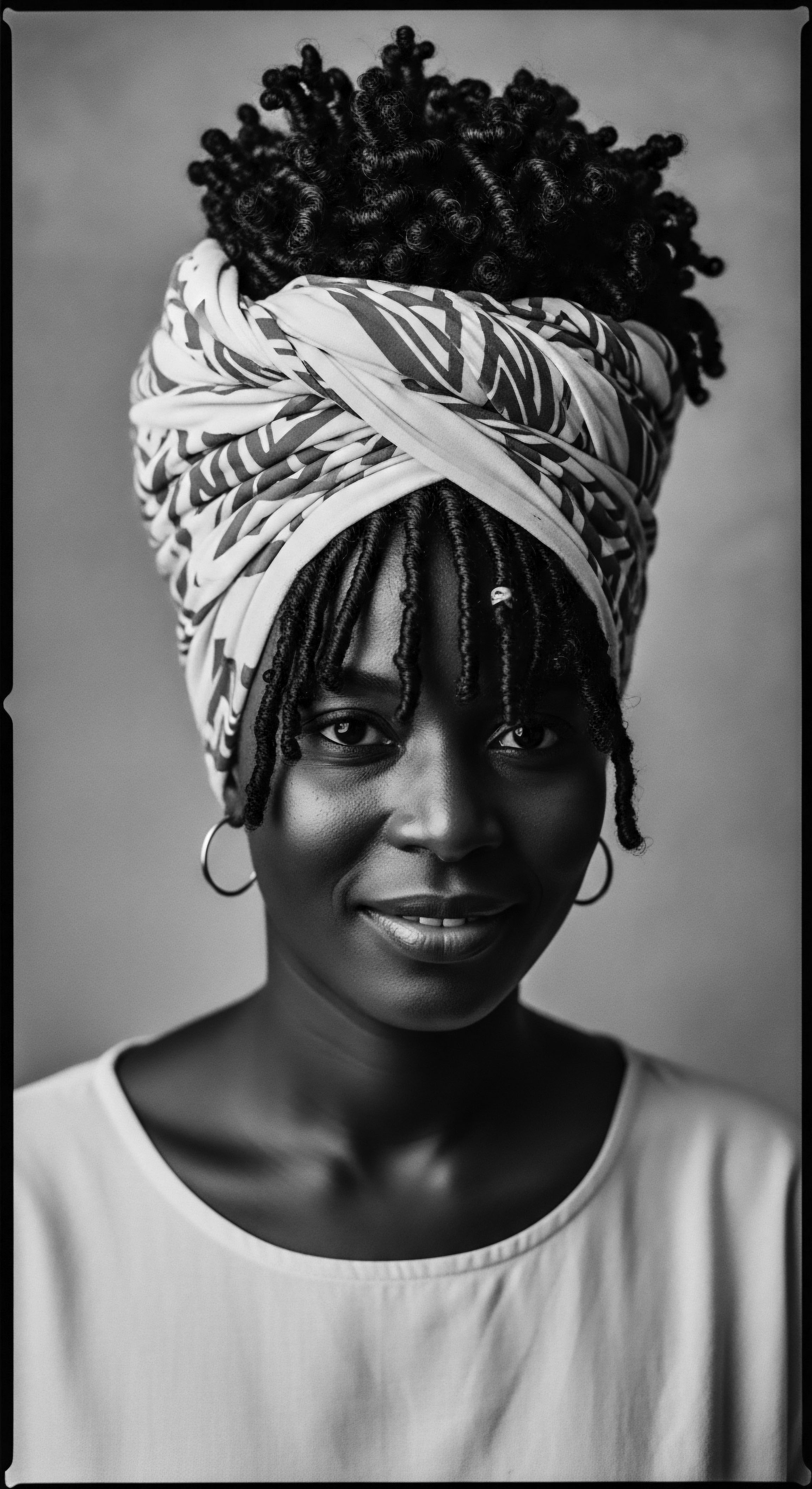
Navigating External Pressures and Resilience
The intermediate perspective also confronts the historical challenges to Hair Authority. The era of the transatlantic slave trade violently disrupted these established practices. Enslaved Africans were often forced to shave their heads, a brutal act of dehumanization designed to strip away identity and sever ties to heritage (BLAM UK CIC, 2022; Never the Less Inc, 2024). Yet, even under such horrific conditions, the resilience of Hair Authority found expression.
Enslaved women would secretly braid rice seeds into their hair for survival, and cornrows were cunningly used to create maps for escape (BLAM UK CIC, 2022; FroHub, 2024). These acts, though borne of immense suffering, represent profound instances of asserting Hair Authority, transforming hair into a tool of resistance and a vessel for cultural memory.
| Historical Practice Braiding rice seeds into hair |
| Purpose and Connection to Hair Authority To preserve sustenance for survival, a secret act of cultural preservation and self-provision. |
| Historical Practice Cornrows used as coded maps |
| Purpose and Connection to Hair Authority To facilitate escape from bondage, transforming hair into a clandestine communication system, demonstrating agency through concealment. |
| Historical Practice Covering hair with head wraps (post-slavery) |
| Purpose and Connection to Hair Authority Often a response to societal pressure or to hide damaged hair from harsh treatments, but also a continuation of cultural practice and a shield against unwanted gazes. |
| Historical Practice These acts illustrate how Hair Authority, even when constrained, persisted as a potent means of survival and cultural continuity. |
Following slavery, the pressure to conform to Eurocentric beauty standards intensified, leading to the widespread adoption of chemical straighteners and pressing combs (BLAM UK CIC, 2022; Refinery29, 2021). This period marked a complex negotiation of Hair Authority, where choices about hair were often influenced by a desire for social acceptance and economic opportunity, rather than pure self-expression (Refinery29, 2021; Oxford Research Encyclopedia of American History, 2017). Yet, even in these adaptations, a deeper understanding reveals that the intent was not always abandonment of identity, but often a means of navigating hostile societal landscapes.
The historical journey of textured hair reveals an enduring spirit of Hair Authority, persistently reshaping itself through acts of resistance and adaptation across epochs of oppression.
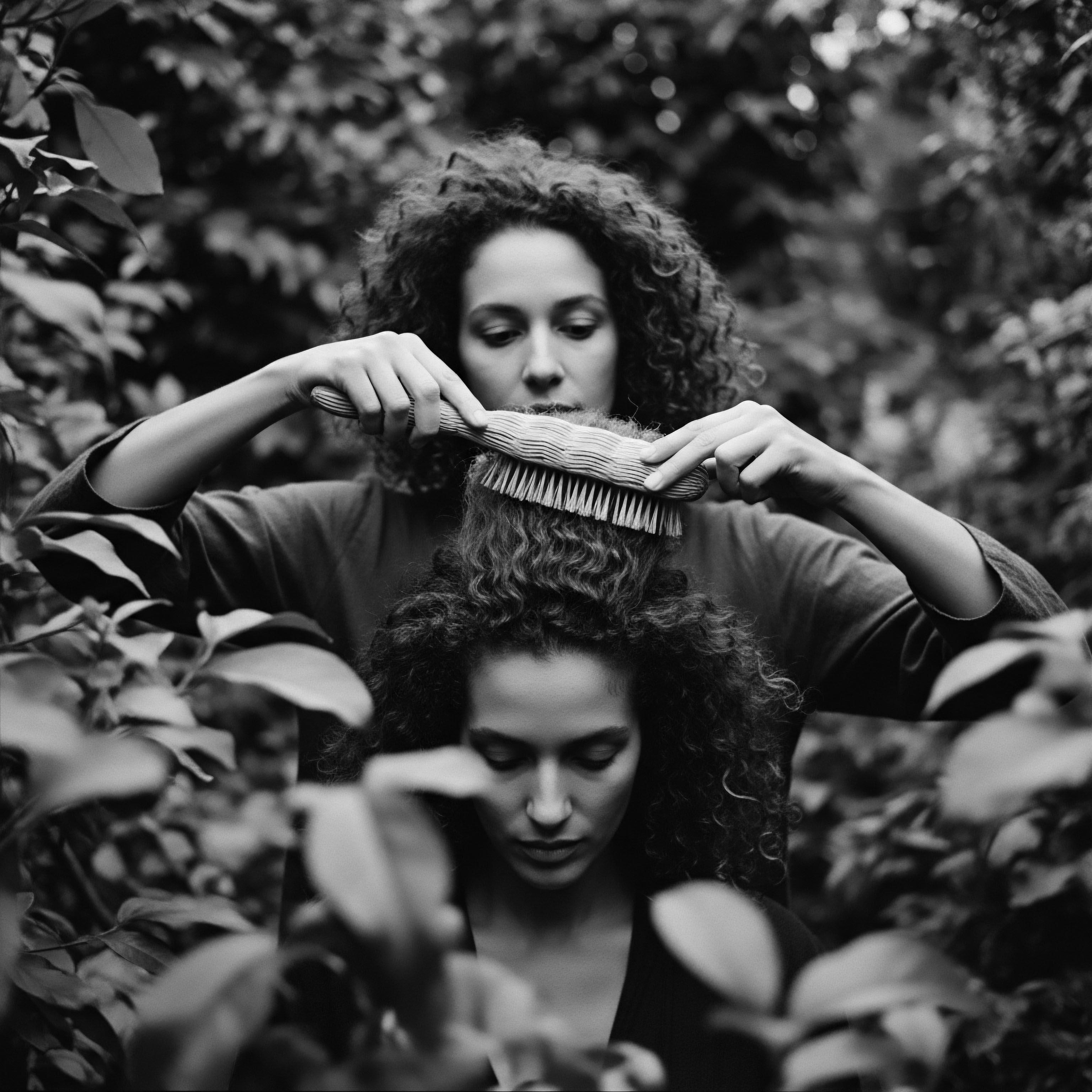
The Natural Hair Movement and Reclaiming Authority
The latter half of the 20th century witnessed a powerful reclamation of Hair Authority through the Natural Hair Movement. Starting in the 1960s with the “Black is Beautiful” movement, wearing natural hair, such as Afros, became a potent political statement and a symbol of racial pride and self-love (Refinery29, 2021; JSTOR Daily, 2019). This shift was a direct challenge to the Eurocentric beauty ideals that had long dominated mainstream society, representing a collective assertion of Hair Authority. It was a conscious choice to embrace inherent texture, signifying a profound connection to African heritage and a rejection of imposed norms (Asbury Theological Seminary, 2022).
This movement, continuing strongly into the 21st century, saw a resurgence spurred by social media, providing platforms for education and community around natural hair care (JSTOR Daily, 2019; Refinery29, 2021). The renewed commitment to natural textures fostered a collective understanding of hair biology, traditional care methods, and the deep cultural meaning embedded in textured hair. It transformed Hair Authority from a private negotiation into a public celebration, reinforcing the idea that hair is a vital component of identity and a testament to an unbroken lineage of strength and beauty (Scholar Commons, 2023).
- 1960s-1970s ❉ The Black Power Movement popularizes the Afro, transforming natural hair into a symbol of pride and defiance against assimilation (Refinery29, 2021; FroHub, 2024).
- Late 20th Century ❉ Continued use of straightening methods alongside growing interest in braids and locks, reflecting complex choices within societal pressures (Oxford Research Encyclopedia of American History, 2017).
- 2000s Onward ❉ Social media fuels a widespread resurgence of the natural hair movement, sharing knowledge and celebrating diverse textures (JSTOR Daily, 2019).
- CROWN Act Legislation ❉ Laws like the CROWN Act emerge to prohibit discrimination based on hair texture and protective styles, legally affirming Hair Authority in schools and workplaces (The Official CROWN Act, 2023; Fisher Phillips, 2020).

Academic
The Hair Authority represents the intrinsic, culturally and historically grounded sovereignty an individual or community exerts over their hair, its physical presentation, and its symbolic interpretations, specifically as it pertains to textured hair of Black and mixed-race ancestries. This multifaceted concept extends beyond mere personal styling choice, encompassing the intricate interplay of biological realities, ancestral wisdom, socio-political contestations, and the enduring psychological resonance of hair as a profound marker of identity and heritage. It signifies a continuous, conscious assertion of selfhood against historical and contemporary pressures toward conformity, affirming hair as a living repository of cultural capital and communal memory.
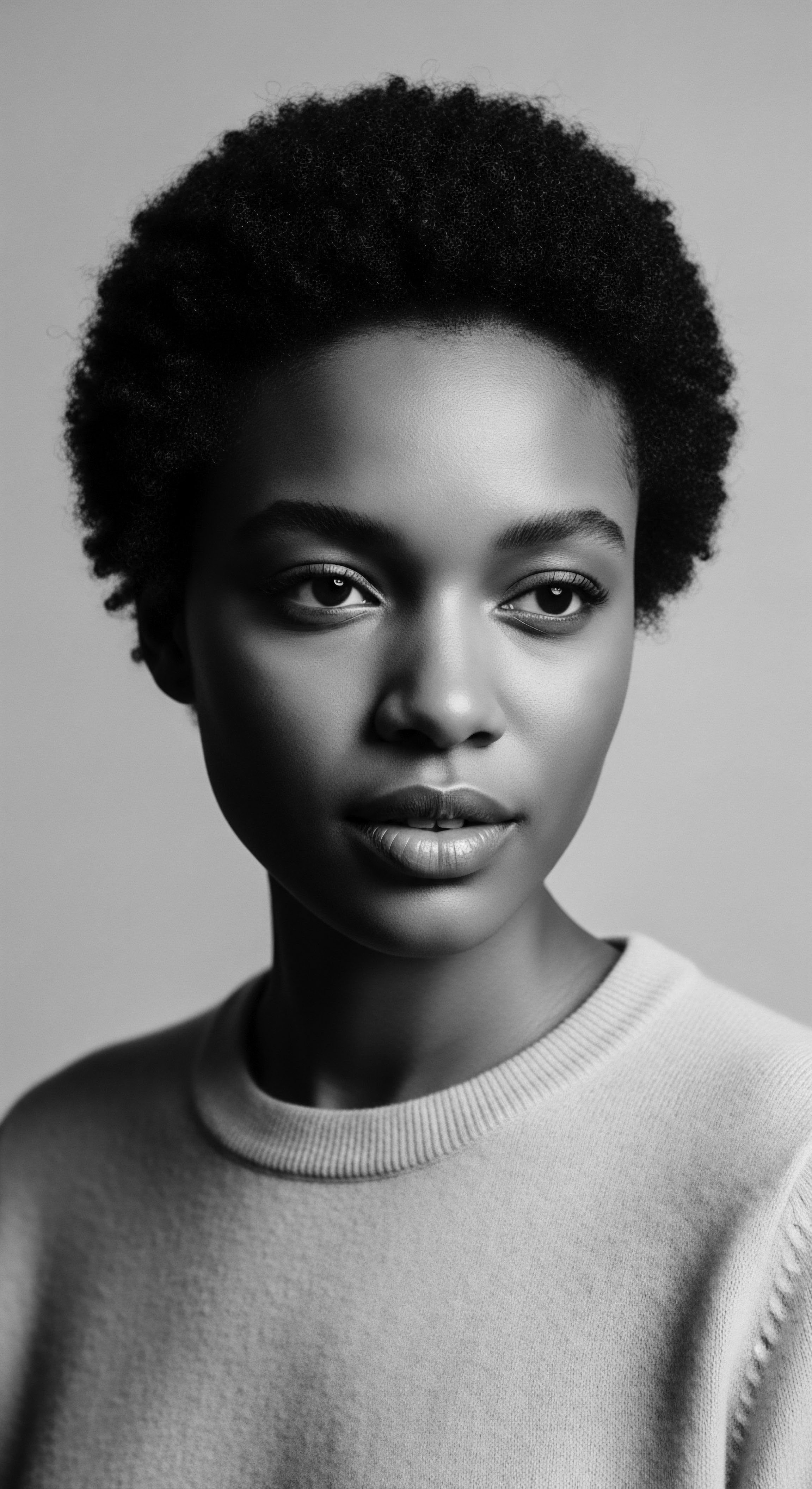
The Biological Underpinnings of Cultural Resonance
A rigorous academic understanding of Hair Authority commences with a deep dive into the very biology of textured hair, recognizing that its unique structure is not a deficit but a foundation for diverse forms of cultural expression and care. The elliptical cross-section of highly coiled hair, coupled with its often fewer cuticle layers and distinct distribution of disulfide bonds, renders it inherently more prone to moisture loss, tangling, and breakage compared to straight hair (Sivasothy, 2011). This biological reality necessitates specific, attentive care strategies to maintain its integrity and vitality. This is where modern hair science often validates the intuitive wisdom of ancestral practices.
Long before the advent of scanning electron microscopes, communities observed how certain ingredients, like shea butter or specific plant oils, interacted with their hair, providing the necessary lubrication and protection against environmental stressors. These traditional remedies were not random concoctions; they were empirical solutions to biological challenges, demonstrating a sophisticated, albeit unwritten, scientific authority over hair care.
Moreover, the inherent curl pattern influences light reflection, giving textured hair its characteristic appearance and necessitating different approaches to product application and distribution. The density and porosity variations further contribute to its unique needs, often demanding heavier, more emollient products to seal moisture within the hair shaft. Understanding these scientific intricacies allows for a comprehensive appreciation of why traditional deep conditioning masks, oiling rituals, and protective styles, such as braids and twists, were not just aesthetic choices but biologically informed practices designed to optimize hair health and longevity. These practices represent a long-standing application of Hair Authority, rooted in intimate knowledge of the hair’s very composition.

Hair as Cultural Capital and Embodied Resistance
From an academic lens, Hair Authority is inextricably linked to the concept of cultural capital, a term advanced by Pierre Bourdieu (1977), referring to the accumulation of knowledge, behaviors, and skills that confer social standing. For Black and mixed-race communities, hair has operated as a complex form of cultural capital, both affirmed within communal settings and simultaneously devalued or policed by dominant societal norms (Scholar Commons, 2023; LDF, 2019). The systematic disparagement of textured hair during periods of enslavement and colonialism served as a deliberate mechanism to strip individuals of this capital, forcing assimilation to Eurocentric beauty ideals (BLAM UK CIC, 2022; Afriklens, 2024).
The historical policing of Black hair, from forced shaves during slavery to discriminatory workplace policies requiring straightening, illustrates a profound suppression of Hair Authority (BLAM UK CIC, 2022; LDF, 2019). Yet, in response, Black hair became a powerful site of embodied resistance. Consider the specific historical instance documented by Emma Dabiri in her work, Twisted ❉ The Tangled History of Black Hair Culture (2019), detailing how enslaved women in Colombia and the Caribbean, particularly those with rice farming backgrounds, would meticulously braid rice grains and seeds into their cornrows (Dabiri, 2019).
This seemingly innocuous act was a clandestine form of food preservation and a strategic means of survival, enabling communities to carry sustenance and cultivation knowledge across treacherous journeys and into new, hostile territories (Dabiri, 2019). This was not merely about carrying food; it was an act of profound Hair Authority, a deliberate act of using one’s physical self—specifically hair—as a vessel for life, heritage, and continuity, directly countering the dehumanizing intent of their oppressors.
Hair Authority manifests as a form of cultural capital, persistently asserted through acts of both overt and subtle resistance against oppressive beauty standards across history.
The ability to carry valuable resources, such as seeds, within hair speaks to the deeply practical and strategic applications of Hair Authority during periods of extreme duress. It demonstrates how hair, often rendered invisible or undesirable by dominant society, was transformed into a secret repository of community survival and cultural resilience. This practice underscores the profound connection between hair, physical wellbeing, and the preservation of identity and future generations. The very act of braiding, a communal and knowledge-intensive practice, further reinforced social bonds and the transmission of vital information, even when overt communication was impossible.

Societal Impact and Policy Interventions
The enduring societal impact of hair discrimination, a direct challenge to Hair Authority, is quantifiable and pervasive. Research from the 2023 Dove CROWN Workplace Study indicates that Black women’s hair is 2.5 times more likely to be perceived as “unprofessional” (The Official CROWN Act, 2023). This statistic highlights the ongoing bias that necessitates legislative interventions like the CROWN Act (Creating a Respectful and Open World for Natural Hair). This legislation, introduced in 2019, aims to prohibit discrimination based on hair texture and protective styles associated with race, such as braids, locs, and twists, in employment and education (The Official CROWN Act, 2023; Fisher Phillips, 2020).
Its very existence underscores the persistent need to legally affirm the Hair Authority that has been historically challenged and undermined. The CROWN Act represents a formal recognition of hair as a civil right, a crucial step in dismantling systemic barriers to equity and self-expression.
The psychological toll of hair discrimination is also significant, impacting self-esteem and mental wellbeing, particularly for Black women and girls who internalize messages that their natural hair is “bad” or “unprofessional” (PMC, 2023). Studies reveal that 53% of Black mothers say their daughters have experienced race-based hair discrimination as early as five years old, and 66% of Black children in majority-white schools have faced such discrimination (The Official CROWN Act, 2023). This early exposure to bias compromises their developing sense of Hair Authority, compelling many to alter their natural hair to conform (PMC, 2023). The push for Hair Authority, therefore, is not merely about aesthetic preference; it is a movement toward psychological liberation and the assertion of a fundamental human right to corporeal autonomy and cultural expression.
- Historical Microaggressions ❉ From the “paper bag test” of skin tone to the “comb test” for hair texture, Black hair was historically subjected to discriminatory evaluations (Byrd & Tharps, 2001).
- Economic Implications ❉ Black consumers spend significantly on hair care, reflecting both a necessity for specific care and historical economic disadvantages due to societal pressures (NielsonIQ, 2023, cited in EPI, 2023).
- Legal Protections ❉ The CROWN Act’s passage in various states seeks to codify Hair Authority, recognizing race-based hair discrimination as a form of racial bias, impacting hiring and educational opportunities (LDF, 2019).
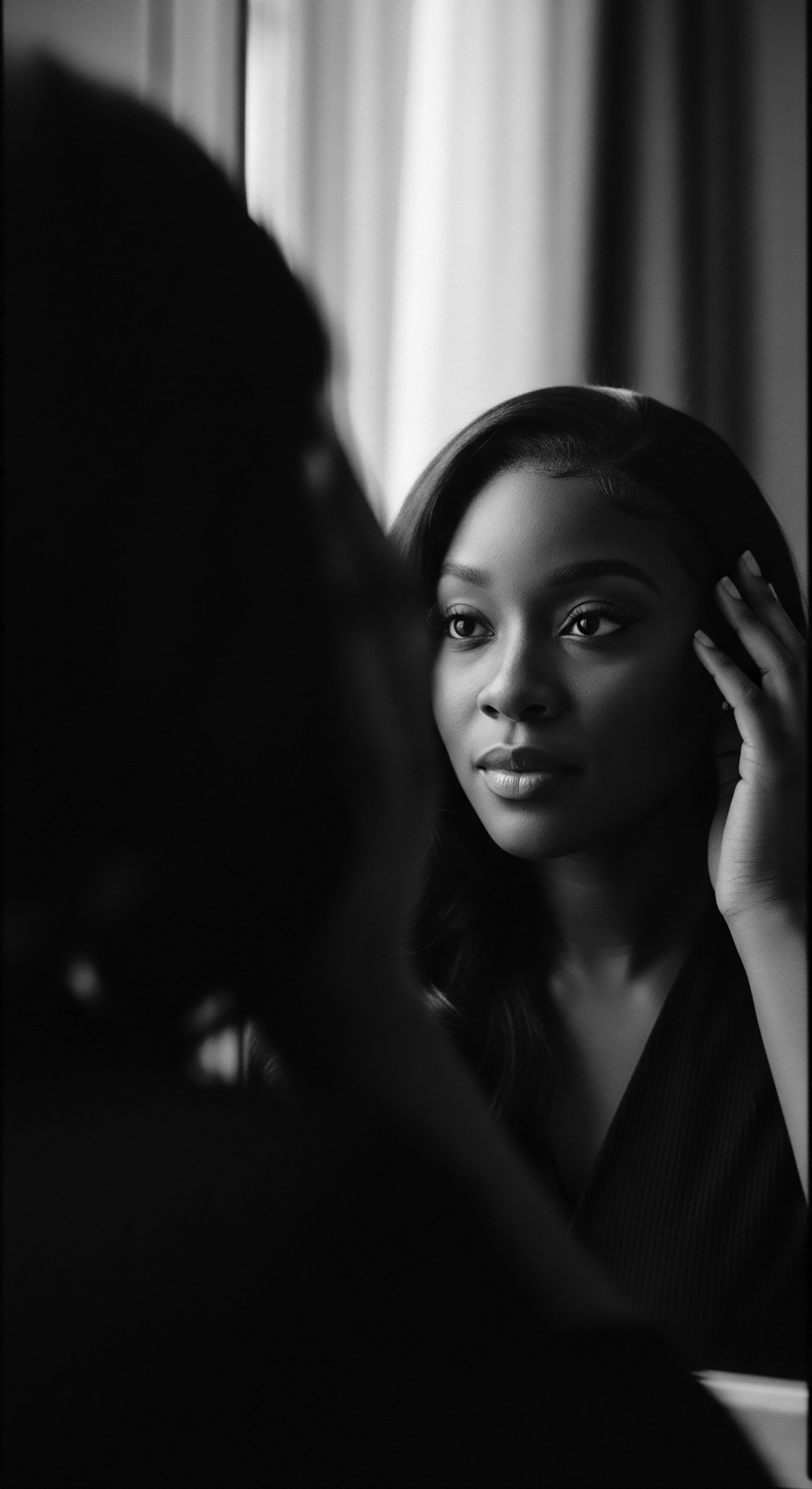
The Living Archive ❉ Ancestral Practices and Modern Science
Academic inquiry into Hair Authority also explores the seamless connections between ancestral practices and contemporary scientific understanding. Many traditional African hair care rituals—such as oiling with plant-based extracts, using specific clays for cleansing, or incorporating protective styles—intuitively align with modern scientific principles of hair health. For instance, the traditional use of coconut oil, shea butter, and aloe vera in various African communities for hair nourishment finds validation in their known moisturizing, emollient, and soothing properties for the scalp and hair fiber (Safo Hair, 2024; Sierra Club, 2018). These centuries-old practices exemplify an empirically derived Hair Authority, where generations developed sophisticated methodologies through trial and communal knowledge sharing.
Consider the widespread practice of “threading” or “African hair wrapping,” a technique involving wrapping sections of hair tightly with thread or yarn (Da Costa, undated; Singh, 2004). This ancient practice, while aesthetically distinctive, also served as a protective style that elongated the hair, reduced tangling, and minimized manipulation, thereby preventing breakage (Da Costa, undated). From a scientific perspective, this technique provides a gentle form of tension that can help align hair cuticles and promote length retention by shielding the hair from environmental damage and excessive handling.
This enduring practice demonstrates a profound understanding of hair mechanics and scalp health, showcasing an ancestral Hair Authority that predates formal scientific frameworks but operates on sound biological principles. It is a testament to the sophistication of indigenous knowledge systems, where care and style were intrinsically linked to health and preservation.
| Traditional Practice African Hair Threading/Wrapping |
| Scientific Rationale (Modern Understanding) Reduces hair manipulation, prevents breakage, elongates hair, and can help align cuticles, promoting length retention by shielding hair. |
| Traditional Practice Oiling scalp and strands with natural extracts (e.g. coconut oil, shea butter) |
| Scientific Rationale (Modern Understanding) Provides emollient properties, seals moisture, protects cuticle from damage, and delivers essential fatty acids and vitamins to the scalp. |
| Traditional Practice Braiding and Twisting as protective styles |
| Scientific Rationale (Modern Understanding) Minimizes exposure to environmental stressors, reduces tangling, decreases mechanical stress from daily styling, and promotes length retention. |
| Traditional Practice Using natural clays (e.g. rhassoul clay) for cleansing |
| Scientific Rationale (Modern Understanding) Gently cleanses without stripping natural oils, detoxifies scalp, and provides minerals, often balancing scalp pH. |
| Traditional Practice These examples reveal the deep, often intuitive, understanding of hair biology embedded within ancestral practices, demonstrating a sophisticated form of Hair Authority. |
The transmission of this specialized knowledge, often through oral traditions and hands-on apprenticeship within family structures, signifies a communal aspect of Hair Authority. It highlights how hair care was not merely an individual pursuit but a shared responsibility, contributing to collective wellbeing and cultural continuity. This intergenerational sharing of expertise underscores the deep connection between individual agency and the collective wisdom that shapes Hair Authority, making it a living, evolving tradition rather than a static concept.
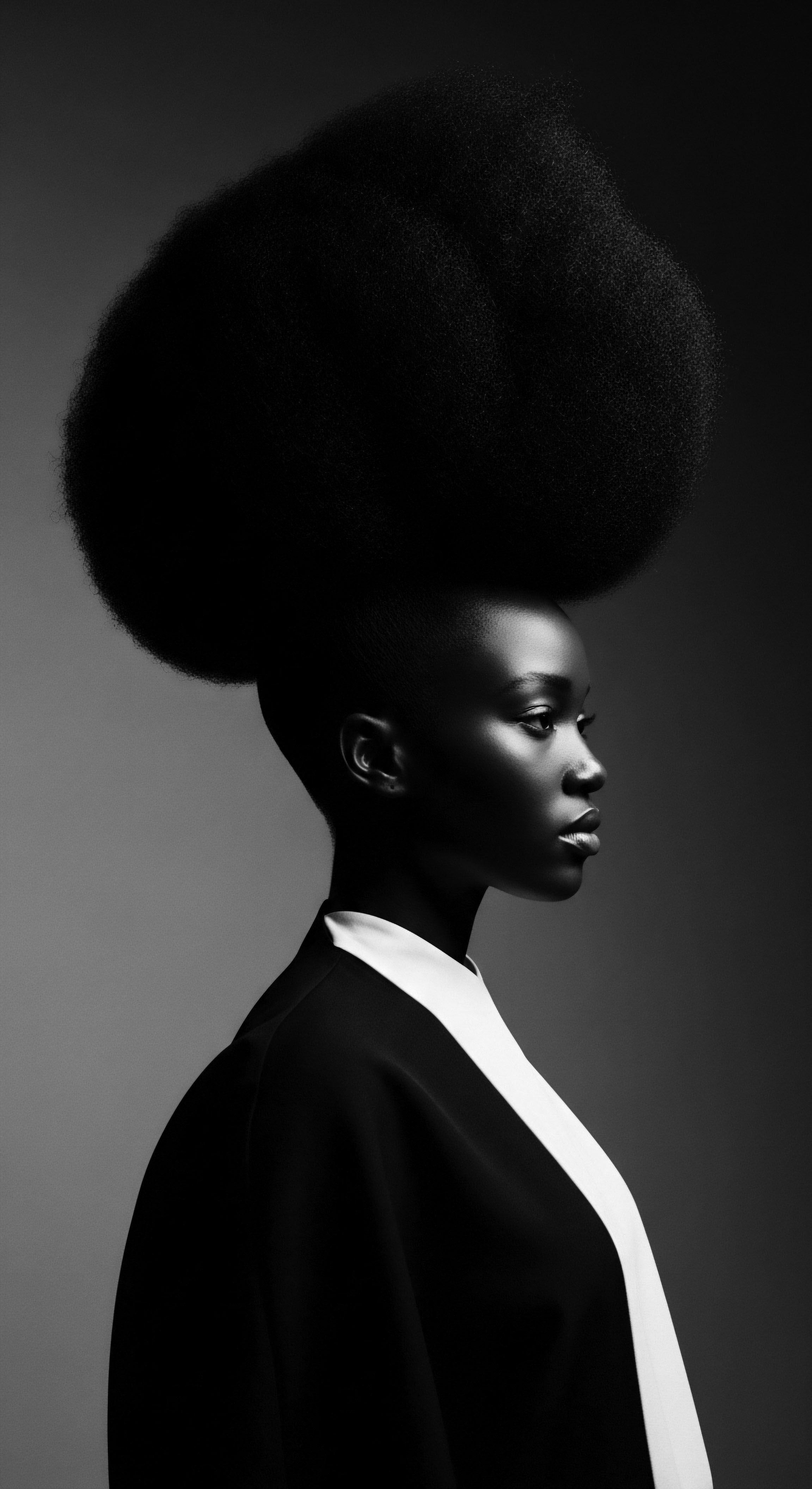
Hair as a Spiritual Conduit and Social Fabric
Beyond the biological and socio-political, academic consideration of Hair Authority acknowledges its deep spiritual and communal dimensions. In numerous African cosmologies, hair is considered a sacred part of the body, a spiritual antennae that connects individuals to the divine and to their ancestors (Umthi Beauty, 2022; Bebrų Kosmetika, 2024). The crown of the head is often seen as the entry point for spiritual energy, imbuing hair with immense significance in rituals, ceremonies, and daily life (Umthi Beauty, 2022). This spiritual connection elevates Hair Authority to a metaphysical plane, where its care and adornment become acts of reverence and communication with the unseen world.
The social function of hair further reinforces its authority. In many pre-colonial African societies, communal hair styling sessions were vital social gatherings, fostering bonds, transmitting oral histories, and reinforcing social hierarchies (Okan Africa Blog, 2020). The act of sitting together, sharing stories, and tending to one another’s hair built community and maintained cultural integrity. This collective engagement with hair demonstrates that Hair Authority is not solely an individual right but also a shared responsibility, a practice that weaves individuals into the broader social fabric and perpetuates ancestral customs.
The continuation of these communal grooming practices, even in contemporary settings, speaks to the enduring power of hair to create and sustain kinship. It is a constant reminder that hair, in its deepest sense, is never truly separate from the collective body and its shared heritage.

Reflection on the Heritage of Hair Authority
The journey through the concept of Hair Authority reveals a deeply resonant truth ❉ hair, particularly for those of Black and mixed-race heritage, is a living testament to ancestral wisdom, enduring resilience, and unwavering self-possession. It is a profound meditation on the connection between our physical selves and the vast tapestry of our history, echoing from the elemental biology of each coil to the grand statements of cultural identity across the ages. The echoes from the source—the very structure of textured hair—informed ancient practices of care and adornment, which in turn birthed tender threads of community and shared knowledge. These threads, woven through time, then shaped the unbound helix of identity, allowing hair to voice belonging and chart futures.
To stand in one’s Hair Authority today means to honor the lineage of resilience, to recognize that the very strands on our heads carry stories of survival, creativity, and persistent beauty. It means acknowledging the deep historical and cultural knowledge that our ancestors possessed, a wisdom that often predated and, indeed, anticipated modern scientific understandings of hair health. It is a celebration of the myriad ways textured hair has served as a language of status, spirituality, and quiet rebellion against oppressive norms. This understanding invites us to approach our hair not merely as something to be styled, but as a sacred aspect of self, deserving of reverence and informed care.
The ongoing dialogue surrounding Hair Authority is a continuation of this ancestral conversation, a recognition that the past is not a static relic but a living force that continues to inform our present choices and aspirations. It is a reminder that personal agency over one’s hair is deeply intertwined with a collective heritage, a shared legacy of beauty, strength, and unwavering spirit.
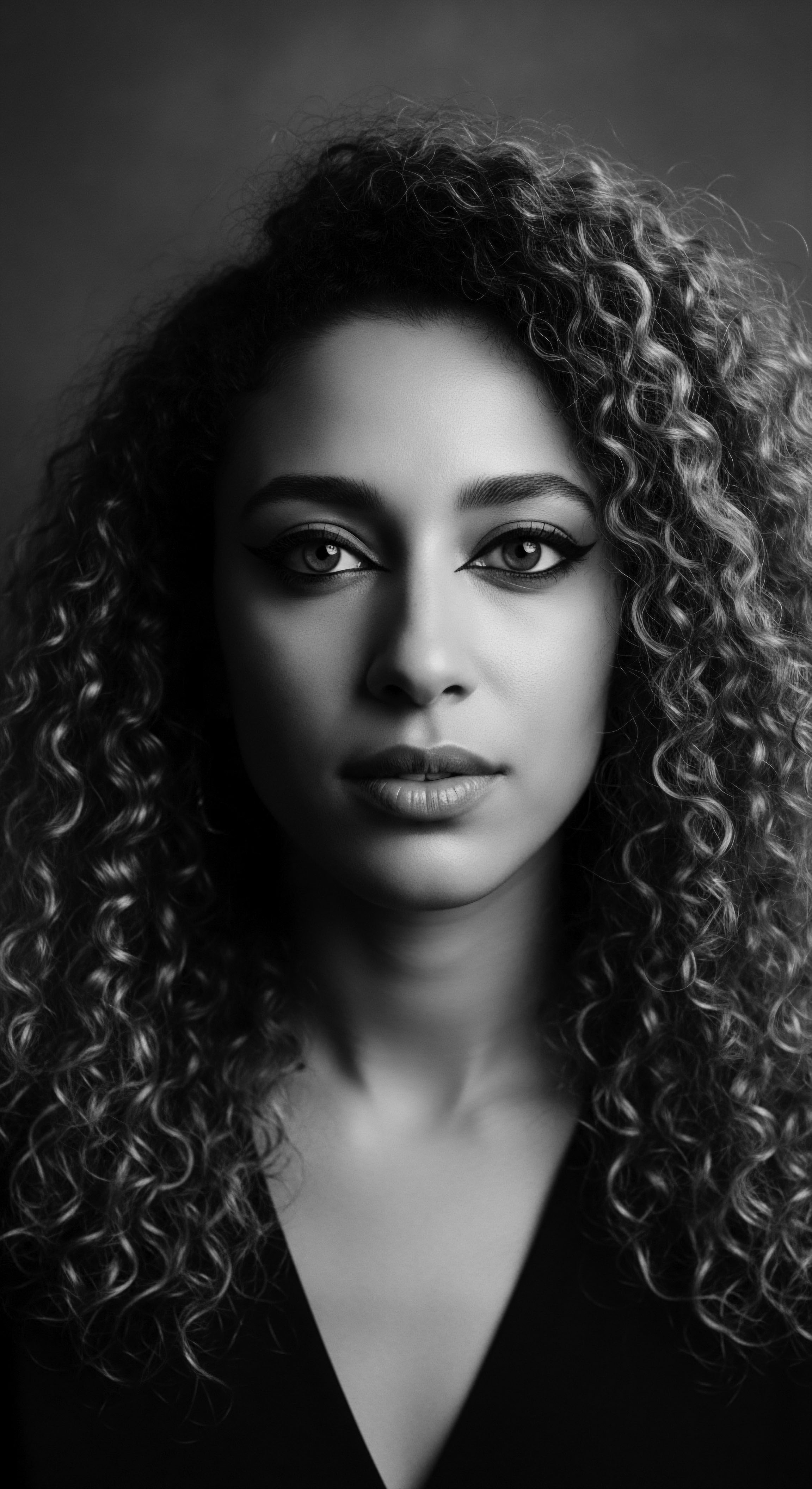
References
- Byrd, A. & Tharps, L. (2001). Hair Story ❉ Untangling the Roots of Black Hair in America. St. Martin’s Press.
- Dabiri, E. (2019). Twisted ❉ The Tangled History of Black Hair Culture. HarperCollins.
- Sivasothy, A. (2011). The Science of Black Hair ❉ A Comprehensive Guide to Textured Hair Care. Sivasothy Publishing.
- Gottlieb, A. & Graham, P. (2010). Braided Worlds. University of Chicago Press.
- Mercer, K. (1987). Black Hair/Style Politics. New Formations, 3, 33-52.
- Bourdieu, P. (1977). Outline of a Theory of Practice. Cambridge University Press.
